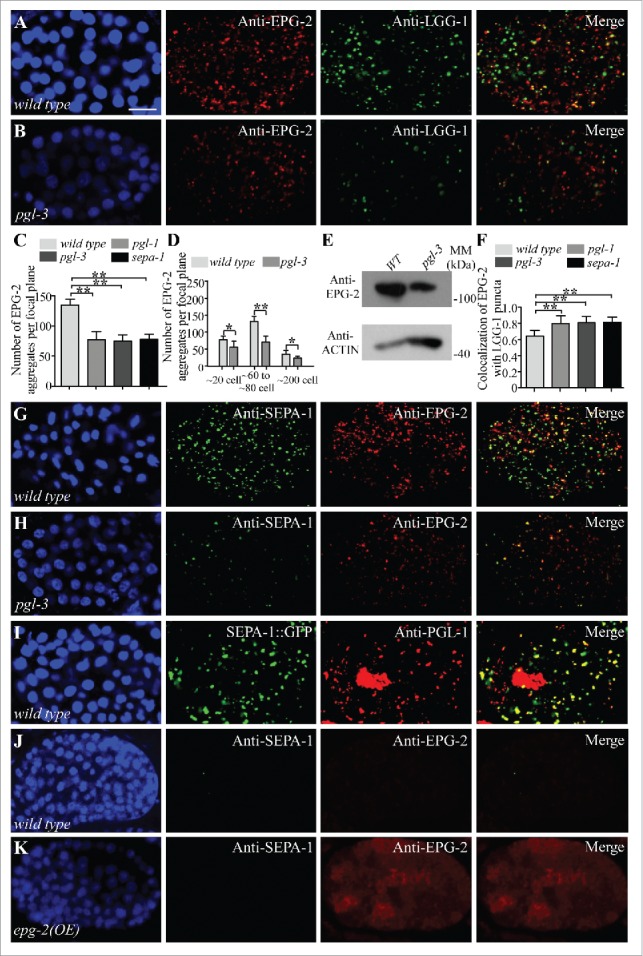Figure 3.

Depletion of PGL-1, PGL-3 and SEPA-1 facilitates the degradation of EPG-2. (A to C) Compared to wild-type embryos (A), colocalization of EPG-2 aggregates with LGG-1 puncta is increased in pgl-3 mutant embryos (B). Quantification of the number of EPG-2 aggregates per focal plane in wild-type embryos and pgl-1, pgl-3 and sepa-1 mutant embryos at the ∼100 cell stage is shown in (C). n = 3 focal planes from 3 embryos, data are shown as mean ± SD, **P < 0.01. (D) Quantification of the number of EPG-2 aggregates per focal plane in wild-type and pgl-3 embryos at the ∼20 cell stage, ∼60 to ∼80 cell stage and ∼200 cell stage. n = 3 focal planes from 3 embryos, data are shown as mean ± SD, *P < 0.05, **P < 0.01. (E) Immunoblotting assays reveal that protein levels of EPG-2 are decreased in extracts of pgl-3 mutant embryos compared with those of wild-type embryos. (F) Quantification of the colocalization of EPG-2 and LGG-1 in wild-type embryos and pgl-1, pgl-3 and sepa-1 mutant embryos at the ∼100 cell stage. n = 3 focal planes from 3 embryos, data are shown as mean ± SD, **P < 0.01. (G and H) Compared to wild-type embryos (G), the number of EPG-2 aggregates in pgl-3 mutant is reduced and the colocalization of SEPA-1 and EPG-2 aggregates is increased in pgl-3 mutant embryos (H). (I) In embryos expressing sepa-1::gfp, endogenous PGL-1, detected by anti-PGL-1, accumulates and colocalizes with SEPA-1::GFP aggregates at the ∼200 cell stage. (J and K) Compared to wild-type embryos (J), embryos overexpressing epg-2 display stronger diffuse EPG-2 signals, detected by anti-EPG-2, at the ∼200 cell stage, but no SEPA-1 aggregates are detected. Scale bar: 10 μm (A, B, G to K).
